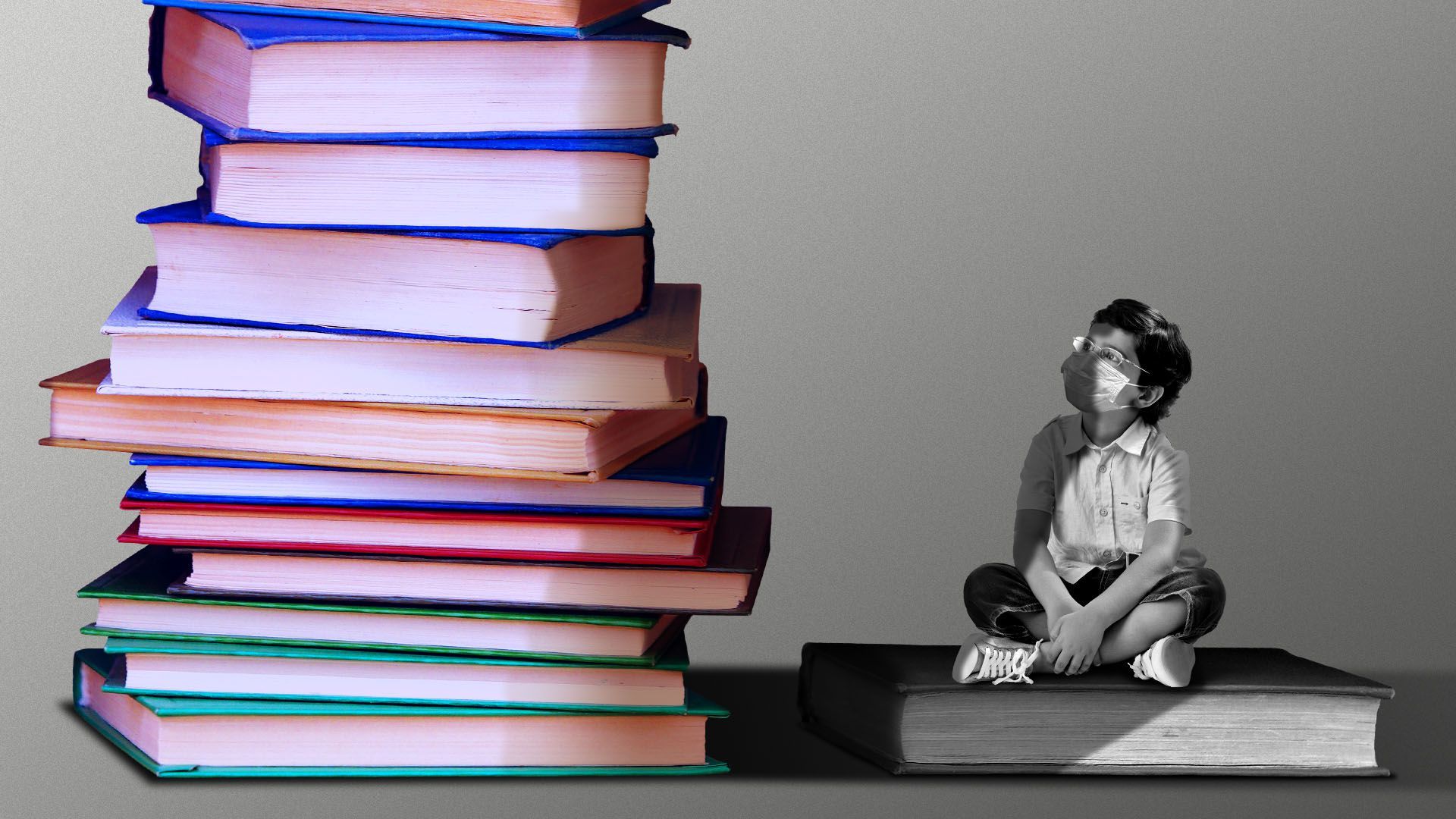The pandemic is making schools even more unequal
Erica Pandey, author of @Work

Illustration: Sarah Grillo/Axios
No matter what's going on at home, schools have always been something of an equalizer — with all the neighborhood kids, richer and poorer, sitting behind the same desks in the same classrooms. Pandemic-induced remote learning is doing away with that.
The big picture: When you don't have kids from different backgrounds learning together, all of their differences become magnified — particularly when they can see into each other's homes, and especially when online learning shortchanges some students more than others.
What's happening: We didn't get the coronavirus pandemic under control over the summer, and a number of school districts — including big ones like Los Angeles and Maryland's Montgomery County — have announced plans to go online for the fall.
Taking school home "just emphasizes every difference," says Susan Ohanian, a longtime public school teacher in Vermont. "The poor kids are going to be the ones who really suffer."
Home conditions and family dynamics will be on display as kids attend classes over video calls.
Socioeconomic differences among classmates are even more pronounced when everyone can see what the inside of everyone else's home looks like.
And children who live in households steeped in pandemic chaos, where parents are too busy to get them ready for the day or set up their workstations, may show up for online school unkempt or in a messy environment.
For many young students, school is a safe space away from an unstable home. Now that safe space has disappeared, just as domestic abuse is on the rise.
And millions of kids have lost family members to the virus or are spending their days worried about a parent who is an essential worker or who has lost their job, says Patricia Hinchey, a professor of education at Penn State. Being at home all the time brings all of those stresses to the surface.
"These are all things that are traumatizing kids," Hinchey says. "And kids cannot learn when they're under emotional stress. They just can’t."
Food insecurity for children will also become a bigger issue as schools remain closed.
Around 22 million American kids count on free or reduced-price lunch at school. Some districts have committed to distributing lunches to the kids who rely on their schools for meals, but not all have done so.
The gaps in remote learning curriculums will affect lower-income students and students of color the most, potentially setting them back in the longer term.
The shift to remote learning in the spring exposed a stark digital divide, and the effects of that divide will only get worse in the fall. There are still millions of kids without reliable broadband access to stream lessons — and millions more who are sharing one computer or even one smartphone with siblings and parents.
On top of that, most schools have pared lessons back to the very basics in order to make them work remotely, meaning kids aren't getting nearly as much out of the teaching as they would in normal times.
Wealthier families will be able to afford tutors for their children. And kids living in two-parent households might have more access to adults who can help them.
Students without these privileges, who are relying solely on remote school, will fall behind.
The bottom line: If we're stuck with online school to keep teachers and students safe, we need to think harder about ways to make it more equitable, experts say.
"When we turn to technology, we simplify what education looks like. What gets lost are all the parts of school that have a huge amount of influence on how students learn, like social interaction and study habits and building self-esteem," says Kevin Kumashiro, former dean of the school of education at the University of San Francisco.
"Let’s make sure we’re thinking about the whole child and not getting caught up in just the academics."
No comments:
Post a Comment